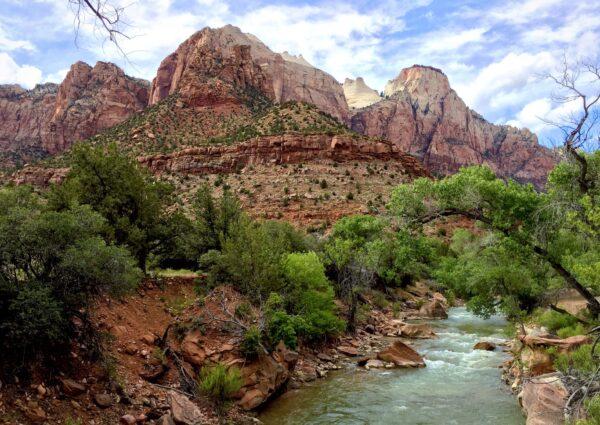There are extraordinary places in North America where the forces of time and nature have carved monoliths that form mysterious, sacred temples. These places captivate human beings from all walks of life by providing a connection to the grandeur and creative power of the natural world. Zion National Park in southern Utah has magnetized, and also repelled, people in many ways for thousands of years. The Paiute people feared the monumental stone walls of Zion Valley above which fire periodically flashes in the sky, where torrents of water pour down through the canyon walls and disease afflicted Native peoples of the past. Formidability is often added to great beauty as the transformative aspects of nature continue to reshape Zion’s dramatic, iconic scenery.
These are the Temples of God, built without the use of human hands. A man can worship God among these great cathedrals just as well as in any man-made church. —Isaac Behunin (first Western settler to build a cabin in Zion Canyon in 1863)

Sacred cliffs in Zion National Park, as seen from the Virgin River. Jeff Perkin





